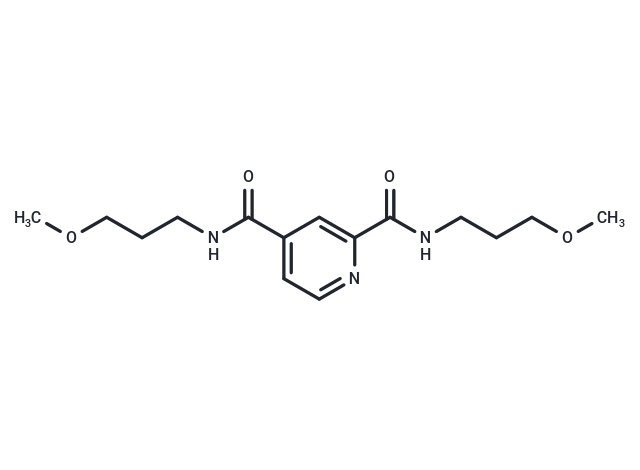Shopping Cart
Remove All Your shopping cart is currently empty
Your shopping cart is currently empty
safironil is a novel antifibrotic compound and a competitive inhibitor of collagen synthesis. safironil inhibited in vitro experiments on fibroblast activation monitored by collagen I mRNA or smooth muscle alpha-actin levels, and fibrogenesis as judged by type I and type III collagen and laminin production. safironil had no effect on the size of liver granulomas without altering total hydroxyproline, but altered the pattern of fibrosis by increasing type III and decreasing type I collagen deposition.

| Pack Size | Price | USA Warehouse | Global Warehouse | Quantity |
|---|---|---|---|---|
| 1 mg | $58 | - | In Stock | |
| 5 mg | $138 | - | In Stock | |
| 10 mg | $203 | - | In Stock | |
| 25 mg | $352 | - | In Stock | |
| 50 mg | $503 | - | In Stock | |
| 100 mg | $696 | - | In Stock | |
| 200 mg | $938 | - | In Stock | |
| 1 mL x 10 mM (in DMSO) | $139 | - | In Stock |
| Description | safironil is a novel antifibrotic compound and a competitive inhibitor of collagen synthesis. safironil inhibited in vitro experiments on fibroblast activation monitored by collagen I mRNA or smooth muscle alpha-actin levels, and fibrogenesis as judged by type I and type III collagen and laminin production. safironil had no effect on the size of liver granulomas without altering total hydroxyproline, but altered the pattern of fibrosis by increasing type III and decreasing type I collagen deposition. |
| In vitro | HOE 77, Safironil, and S 4682 are inhibitors of prolyl 4-hydroxylase, which is essential for thecollagen formation. Although HOE 77, Safironil, and S 4682 seem to work by inhibiting HSC activation, further studies will be required before their clinical application. alpha-Tocopherol, retinyl palmitate, and silybinin reduce lipid peroxidation and attenuate HSC activation in experimental models.[2] |
| In vivo | The present studies evaluate the mechanism of action of two novel antifibrotic compounds, HOE 077 and Safironil, which were designed as competitive inhibitors of collagen protein synthesis. Stellate cell activation, rather than collagen synthesis, proved to be the target of both HOE 077 and Safironil in the intact liver. In culture, the drugs not only prevented the activation of stellate cells but also accelerated their deactivation. They were no more effective in co-cultures containing hepatocytes than in pure stellate cell cultures, indicating that metabolic conversion of HOE 077 was not required. Interestingly, the response of cells from females was greater than that of male cells, leading to the conclusion that stellate activation is sexually dimorphic. This finding may be relevant to the observation that fibrosis in chronic viral hepatitis progresses less rapidly and that hepatocellular carcinoma is less frequent in females than in males.[1] |
| Molecular Weight | 309.36 |
| Formula | C15H23N3O4 |
| Cas No. | 134377-69-8 |
| Smiles | C(NCCCOC)(=O)C=1C=C(C(NCCCOC)=O)N=CC1 |
| Storage | Pure form: -20°C for 3 years | In solvent: -80°C for 1 year | Shipping with blue ice/Shipping at ambient temperature. | ||||||||||||||||||||||||||||||
| Solubility Information | DMSO: 30 mg/mL (96.97 mM), Sonication is recommended. | ||||||||||||||||||||||||||||||
Solution Preparation Table | |||||||||||||||||||||||||||||||
DMSO
| |||||||||||||||||||||||||||||||
| Size | Quantity | Unit Price | Amount | Operation |
|---|

Copyright © 2015-2026 TargetMol Chemicals Inc. All Rights Reserved.